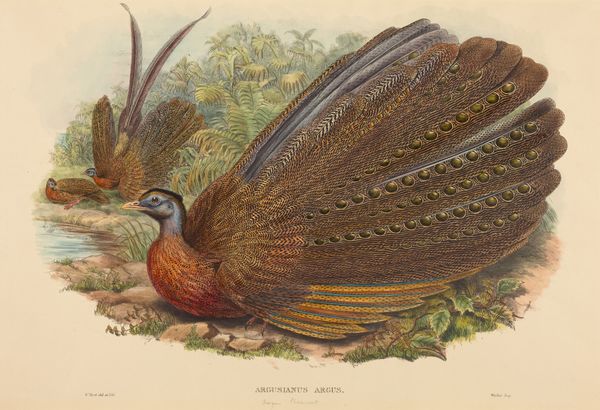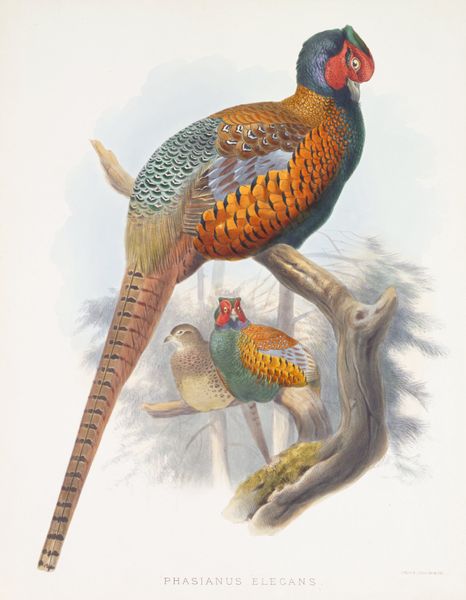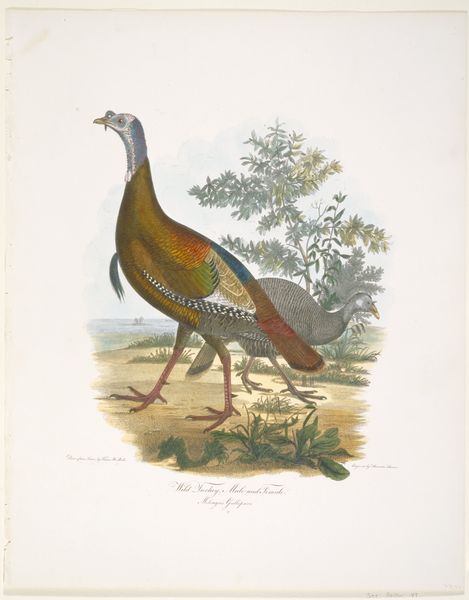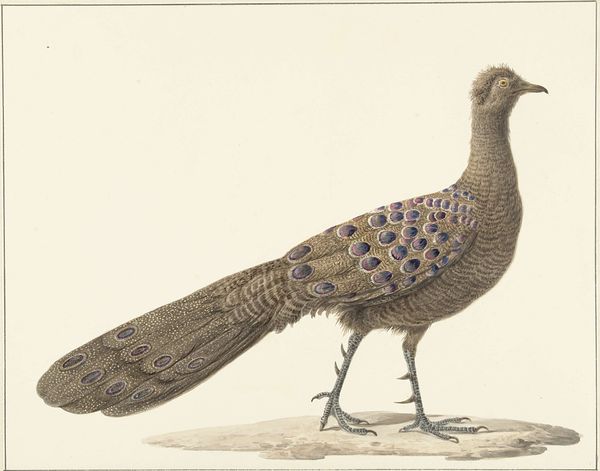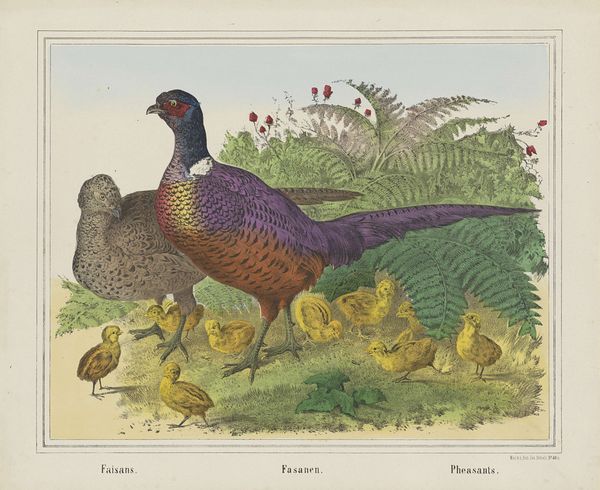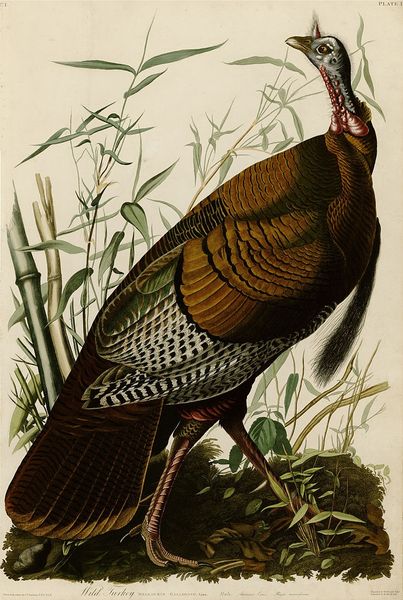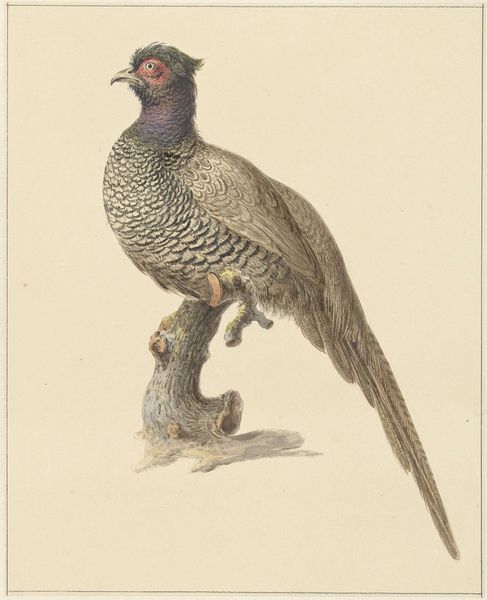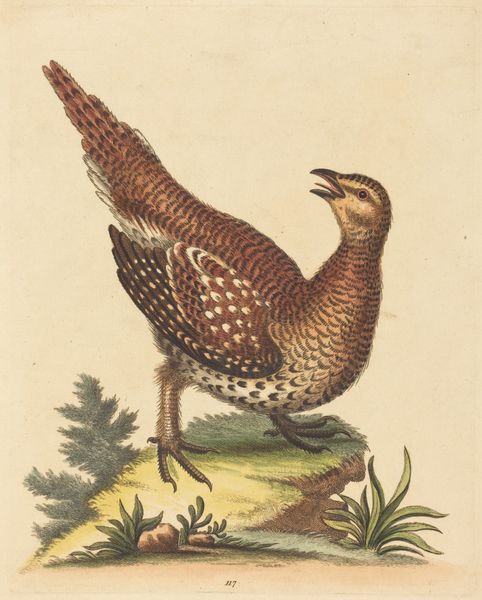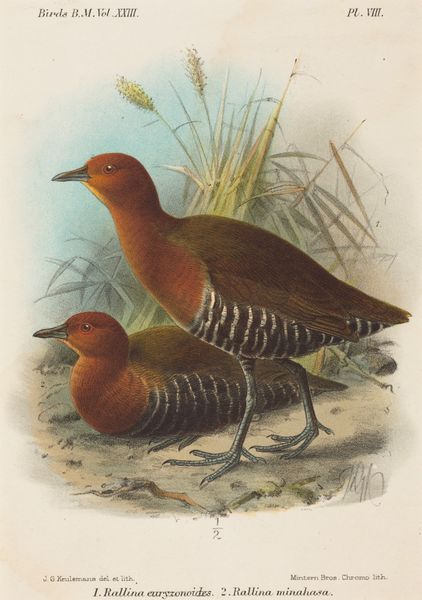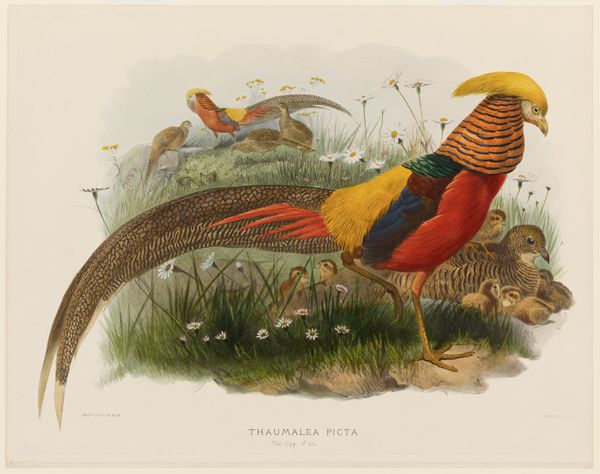
Dimensions: 14 x 18 in. (35.56 x 45.72 cm) (sheet)
Copyright: Public Domain
Curator: This is Plate 54, created between 1850 and 1883 by John Gould. It's currently part of the collection at the Minneapolis Institute of Art. Editor: Wow, those colors really pop! There's something almost regal about this bird; the vibrant blues and reds against the earthy browns create a striking contrast. It gives an impression of a meticulously crafted jewel. Curator: It's a chromolithograph; a colored print. That accounts for the vividness you're noticing. These images were part of Gould's ambitious project documenting the birds of Asia. Think about the industrial processes needed to reproduce color images at this scale, and how they affected print culture and its accessibility. Editor: So, it wasn’t just a solo endeavor then; how did Gould's publication process intersect with scientific illustration and popular engagement with natural history at that time? Curator: Exactly! Gould worked with a team of artists and lithographers. His work played a significant role in shaping Victorian understandings of the natural world, connecting scientific observation to public visual culture through museums and displays, thus playing a major role in natural history becoming more accessible. Editor: You can see a definite romanticism in its depiction. The birds aren't simply specimens; there’s an artistic interpretation present. Are we considering a certain degree of artifice here? It may contribute to how natural history has become this complex mix of real-world science and projected social meaning. Curator: That is certainly up for debate. He's presenting these birds in a romanticized landscape which could give viewers a somewhat distorted impression of their actual habitat. His team’s artistic labor also highlights that seemingly objective depictions of the natural world are often products of intricate social, political, and artistic forces. Editor: The level of detail, achieved through lithography and hand-coloring, surely elevates the naturalness of the artwork, further blurring boundaries between mere biological recording and artistry. And these choices impact the image’s accessibility and influence—they aren't neutral. Curator: Precisely. Consider how the availability and distribution of these images helped shape colonial perceptions of foreign lands and their resources. It definitely served certain cultural and political ends. Editor: It’s really amazing how this one print opens up so many avenues. Considering the societal impacts related to its creation, from scientific exploration to the distribution methods used during its publication, all come into question and should not be forgotten! Curator: Absolutely, reflecting on the layers of its production provides a broader view of the cultural landscape in which "Plate 54" came to exist.
Comments
No comments
Be the first to comment and join the conversation on the ultimate creative platform.
